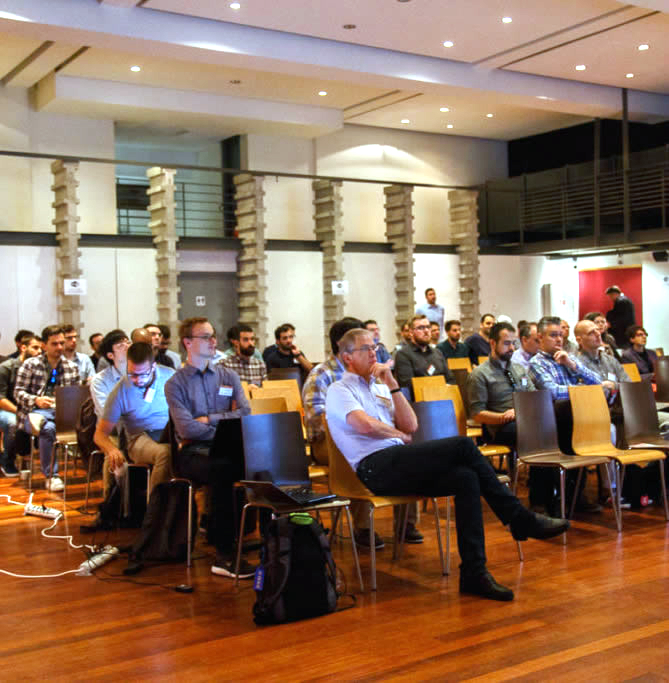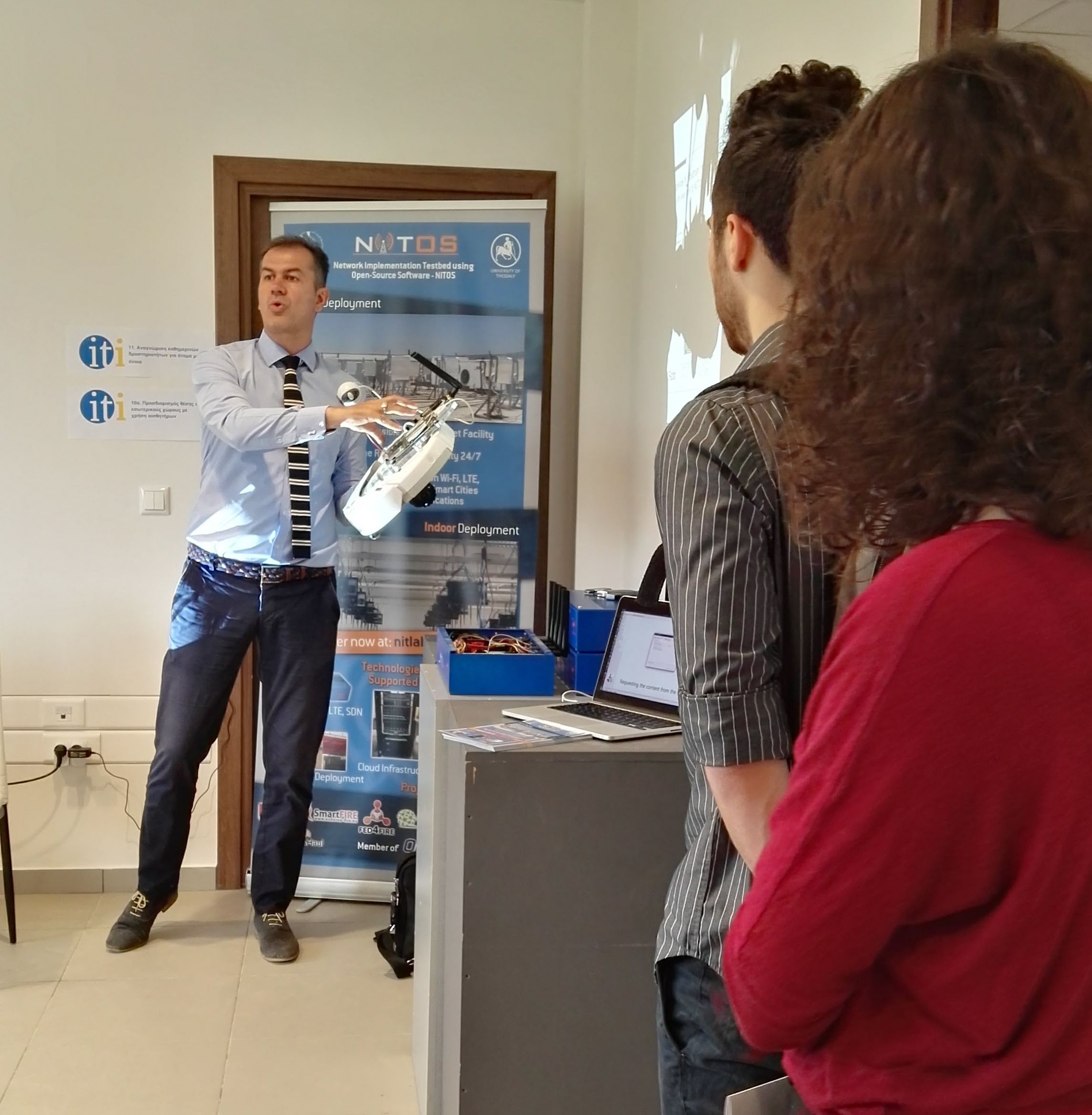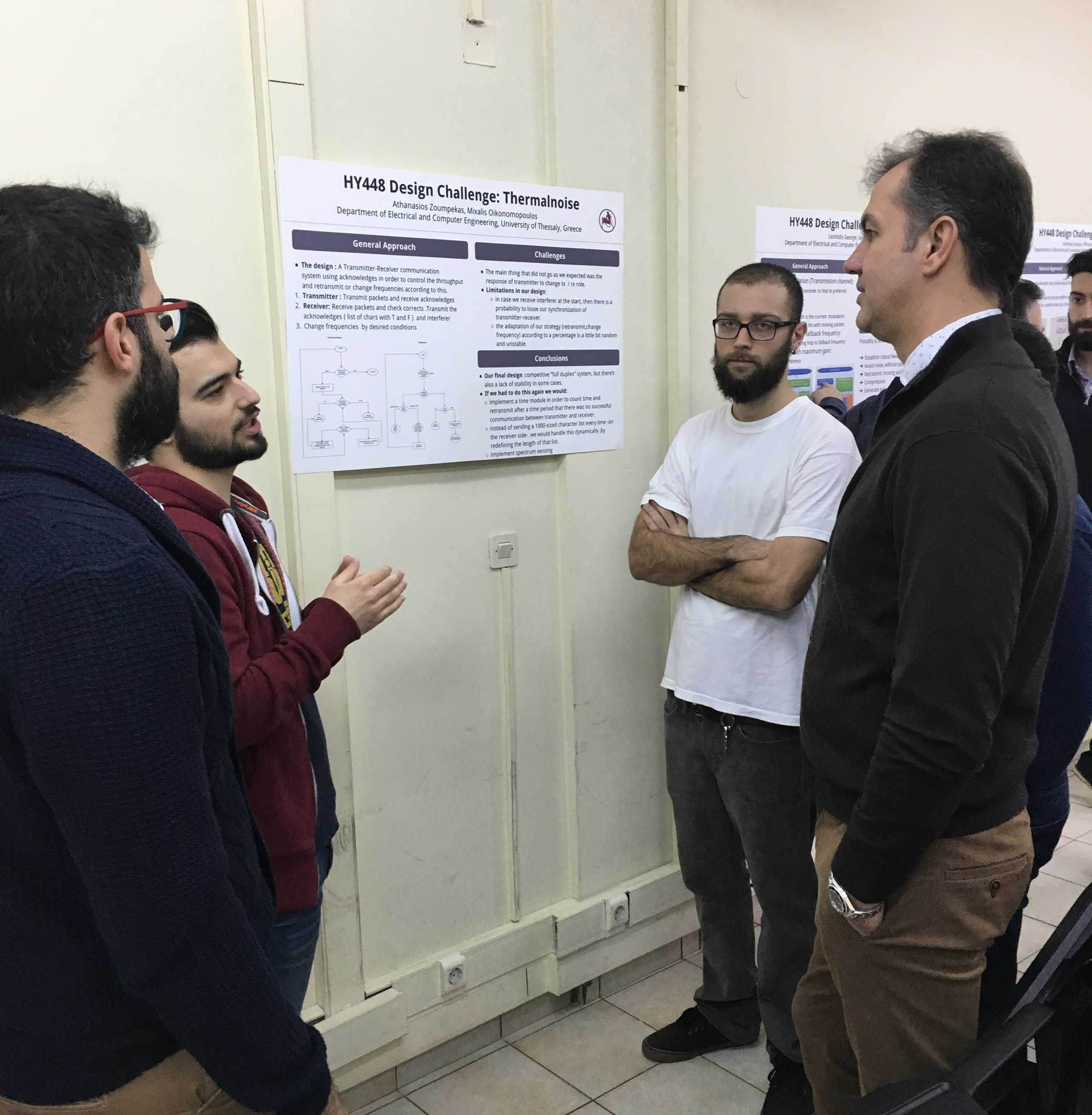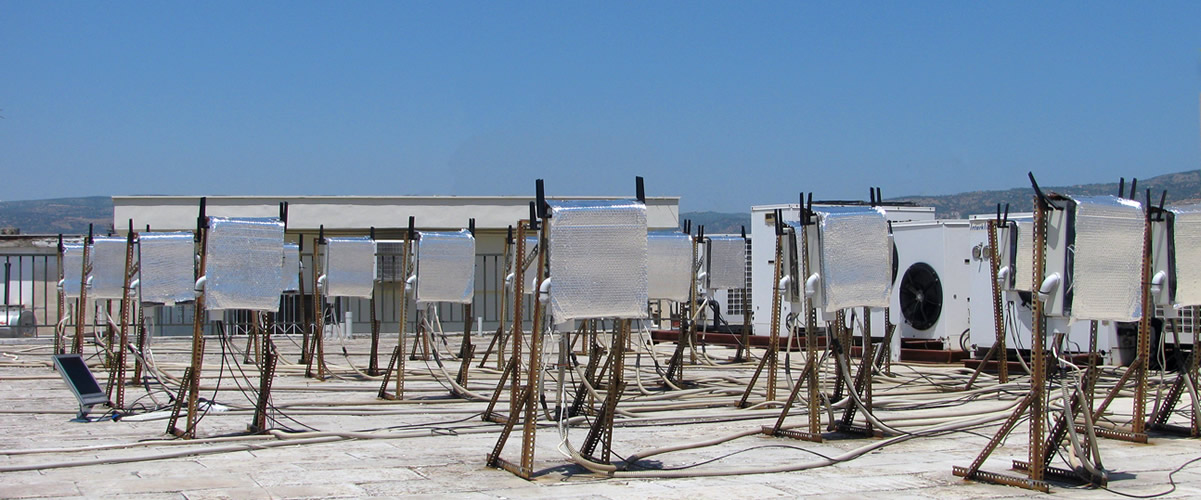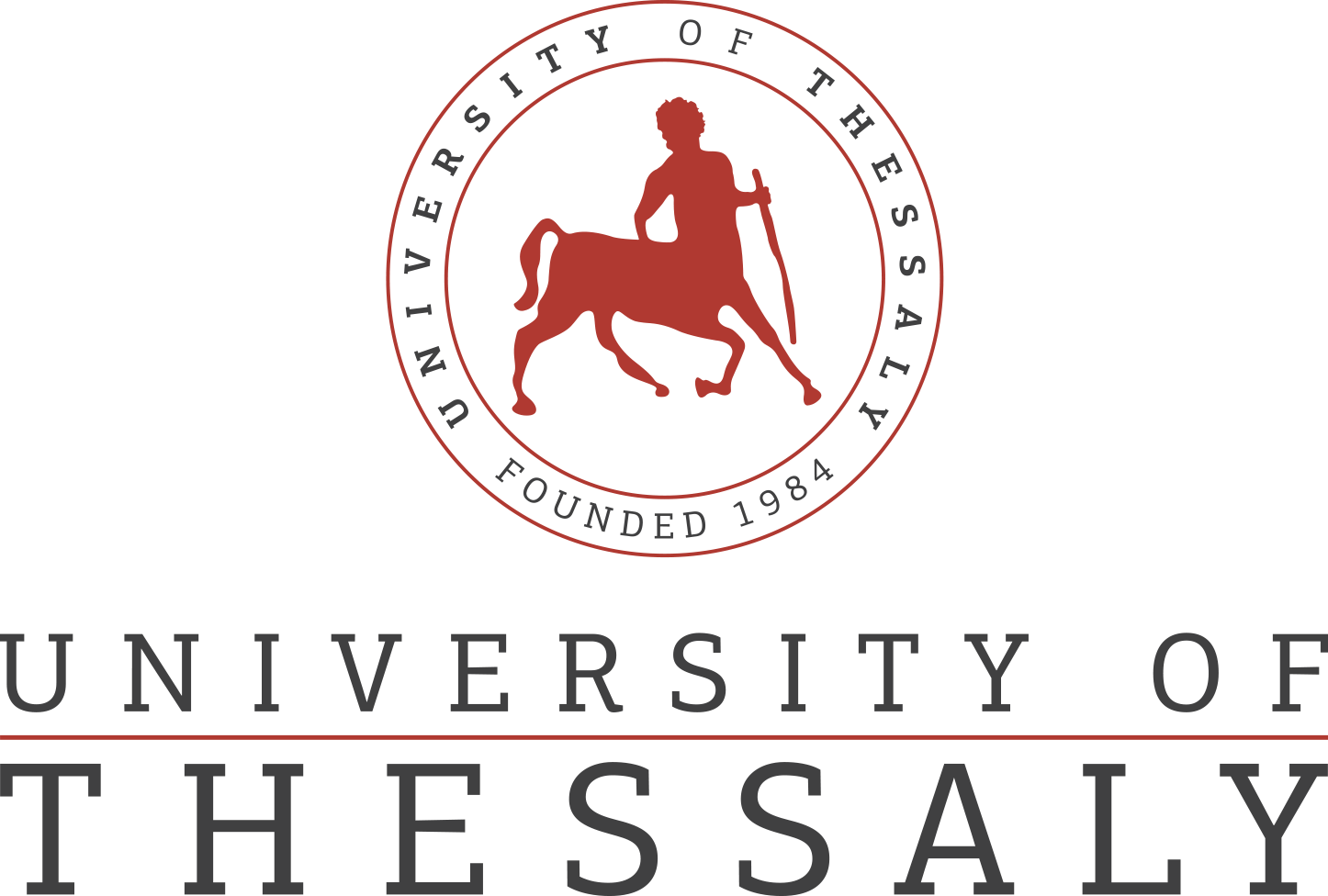-
ITI Open Day 2017
NITlab participated in ITI Open Day 2017 , in Thessaloniki, 16 May 2017,
… Read More -
Annual Spectrum Challenge in UTH
On 9th of February 2017, the annual Spectrum Challenge of University of
… Read More -
Berlin Pilot 1st workshop, MAZI
The 1st workshop of the Berlin Pilot of the MAZI project was
… Read More
- 1
- 2
- 3
- 4
Activities
-
Read More
NITOS facility provides remote access to OpenFlow switches (2 x Pronto 3290 , 2 x HP 3800 ), enabling the user to create
… -
Read More
NITOS is an Intelligent Transport System (ITS) compatible facility thanks to the implementation of the key components of the ITS
…
Members area
NITOS
The Future Internet Facility
NITOS facility
The main experimental components of NITOS are:
- A wireless experimentation testbed, which consists of 100 powerful nodes (some of them mobile), that feature multiple wireless interfaces and allow for experimentation with heterogeneous (Wi-Fi, WiMAX, LTE, Bluetooth) wireless technologies.
- A Cloud infrastructure, which consists of 7 HP blade servers and 2 rack-mounted ones providing 272 CPU cores, 800 Gb of Ram and 22TB of storage capacity, in total. The network connectivity is established via the usage of an HP 5400 series modular Openflow switch, which provides 10Gb Ethernet connectivity amongst the cluster’s modules and 1Gb amongst the cluster and GEANT.
- A wireless sensor network testbed, consisting of a controllable testbed deployed in UTH’s offices, a city-scale sensor network deployed in Volos city and a city-scale mobile sensing infrastructure that relies on bicycles of volunteer users. All sensor platforms are custom, developed by UTH, supporting Arduino firmware and exploit several wireless technologies for communication (ZigBee, Wi-Fi, LTE, Bluetooth, IR).
- A Software Defined Radio (SDR) testbed that consists of Universal Software Radio Peripheral (USRP) devices attached to the NITOS wireless nodes. USRPs allow the researcher to program a number of physical layer features (e.g. modulation), thereby enabling dedicated PHY layer or cross-layer research.
- A Software Defined Networking (SDN) testbed that consists of multiple OpenFlow technology enabled switches, connected to the NITOS nodes, thus enabling experimentation with switching and routing networking protocols. Experimentation using the OpenFlow technology can be combined with the wireless networking one, hence enabling the construction of more heterogeneous experimental scenarios.
The testbed is based on open-source software that allows the design and implementation of new algorithms, enabling new functionalities on the existing hardware. The control and management of the testbed is done using the cOntrol and Management Framework (OMF) open-source software. NITOS supports evaluation of protocols and applications under real world settings and is also designed to achieve reproducibility of experimentation.
Cloud Computing
NITOS cloud infrastructure is based on HP GEN8 blade servers and one HP DL380p GEN8 server.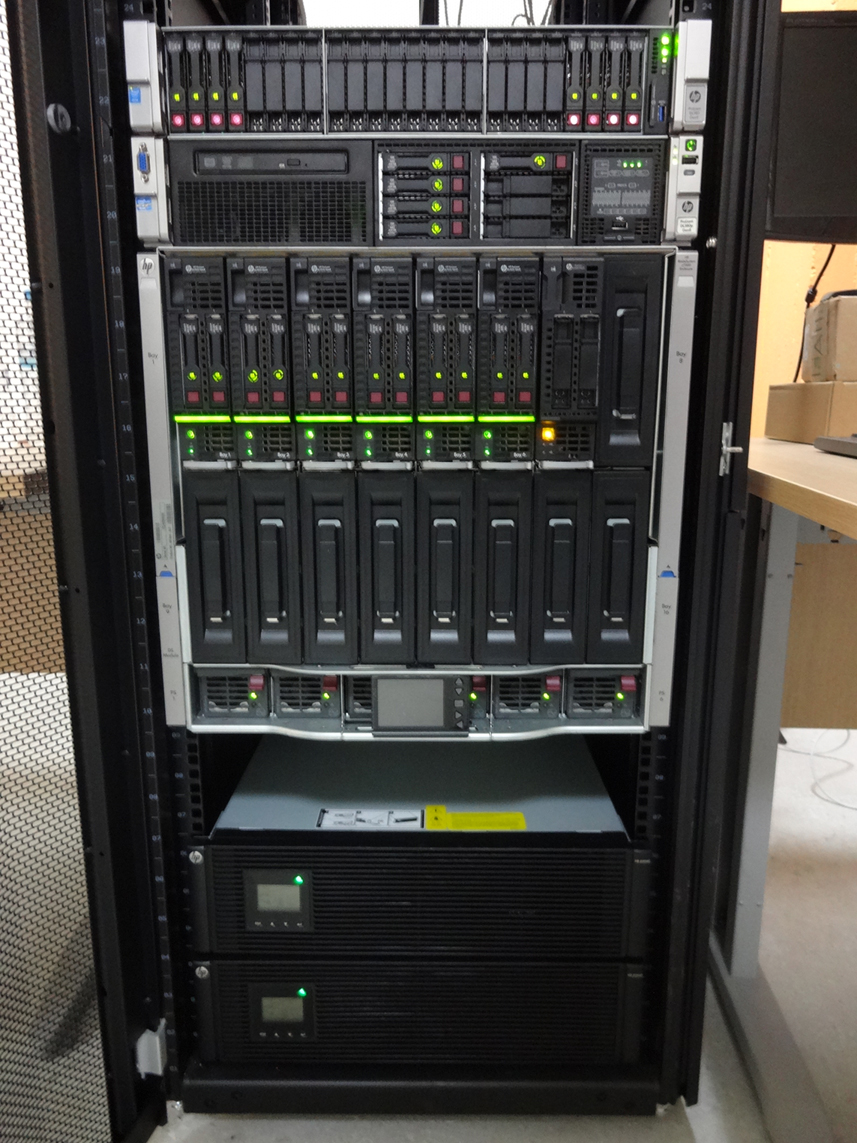 Each blade server has two powerful 16-core Intel Xeon processors, 96 GBs of RAM and two 300GB 6G SAS 10K HDDs, formatted in level one (1) RAID. In addition, each unit consists of two 10GB and four 1GB Ethernet interfaces used for the deployment of the hardware’s virtualization, as well as for the connection with the shared storage unit, which has 18 Tb of storage capacity. As far as the rack mounted server is concerned, it comprises of two 12-core Intel Xeon processors, 64 GBs of RAM and five 450GB 6G SAS 10K HDDs, formatted in level five (5) RAID. Regarding the networking hardware, two 10GB and four 1GB Ethernet interfaces are used as well.
Each blade server has two powerful 16-core Intel Xeon processors, 96 GBs of RAM and two 300GB 6G SAS 10K HDDs, formatted in level one (1) RAID. In addition, each unit consists of two 10GB and four 1GB Ethernet interfaces used for the deployment of the hardware’s virtualization, as well as for the connection with the shared storage unit, which has 18 Tb of storage capacity. As far as the rack mounted server is concerned, it comprises of two 12-core Intel Xeon processors, 64 GBs of RAM and five 450GB 6G SAS 10K HDDs, formatted in level five (5) RAID. Regarding the networking hardware, two 10GB and four 1GB Ethernet interfaces are used as well.
KVM hypervisor software on Ubuntu Trusty OS is used in order to provision the servers’ hardware resources and support a robust and sustainable cloud environment.
The management and control of the virtualized datacenter infrastructure is made with the Openstack Icehouse framework in order to decompose infrastructure provisioning and management into compute, storage and network services.
The networking deployment of the aforementioned infrastructure is based on a modular Openflow switch by HP; hosting both 10GB and 1GB Ethernet interfaces via the usage of different modules.
Hardware
| Components | Description | Comments |
| Servers |
7 x HP blade servers 2 x HP DL380p server |
|
| Total Capacity |
CPU: 272 Cores RAM: 800 GB HDD capacity: 22 TB |
|
| Switch | HP 5412r
|
Openflow 1.3 |
| Firewall | Software solution |
Virtualization service
| Component | Description |
| Hypervisor | KVM |
| Cloud Manager | OpenStack Mitaka |
